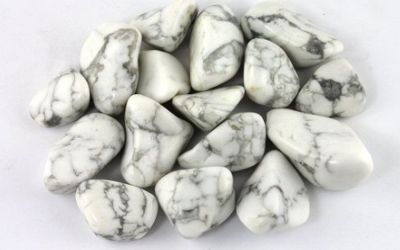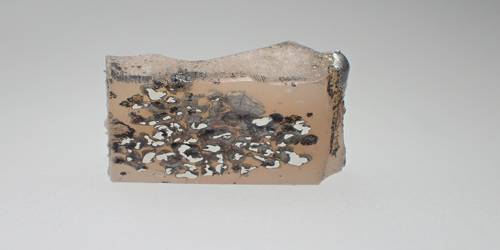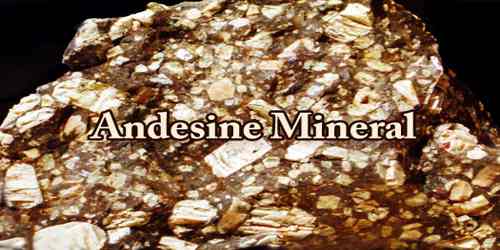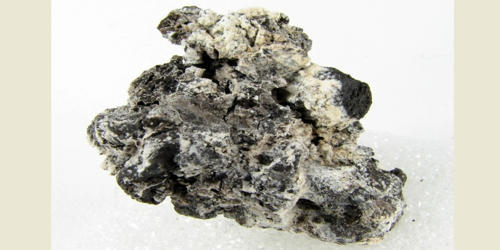Howlite, a calcium borosilicate hydroxide [Ca2B5SiO9(OH)5], is a borate mineral found in evaporite deposits. It is a mineral consisting of a white nodular or earthy calcium borosilicate. It is naturally white with fine grey marbling but can be dyed other colors to add a level of color therapy to its attributes. Howlite was discovered near Windsor, Nova Scotia in 1868 by Henry How (1828–1879), a Canadian chemist, geologist, and mineralogist.
Howlite is a lovely stone to use when needing to reduce anxiety, tensions, and stress. It can be used to facilitate awareness, encourage emotional expression and assist in the elimination of pain, stress and/or rage.
General Information
- Category: Inoborates
- Formula: Ca2B5SiO9(OH)5
- Crystal system: Monoclinic
- Crystal class: Prismatic (2/m) (same H-M symbol)

Fig: Howlite
Properties
Its structure is monoclinic with a Mohs hardness of 3.5 and lacks regular cleavage. Crystals are prismatic and flattened on {100}. The crystals from Tick Canyon are elongated along the 010 axis, while those from Iona are elongated along the 001 axis.
- Color: White, colorless
- Cleavage: None
- Fracture: Conchoidal, uneven
- Mohs scale hardness: 3.5
- Luster: Subvitreous, glimmering
- Streak: white
- Diaphaneity: Translucent
- Specific gravity: 2.53 – 2.59
- Optical properties: Biaxial (-)
Occurrence
The most common form of howlite is irregular nodules, sometimes resembling cauliflower. Crystals of howlite are rare, having been found in only a couple of localities worldwide. Crystals were first reported from Tick Canyon in the Sierra Pelona Mountains of California, and later at Iona, Nova Scotia. Crystals reach a maximum size of about one centimeter. The crystals at Iona are colorless, white or brown and are often translucent or transparent.
Information Source:
















